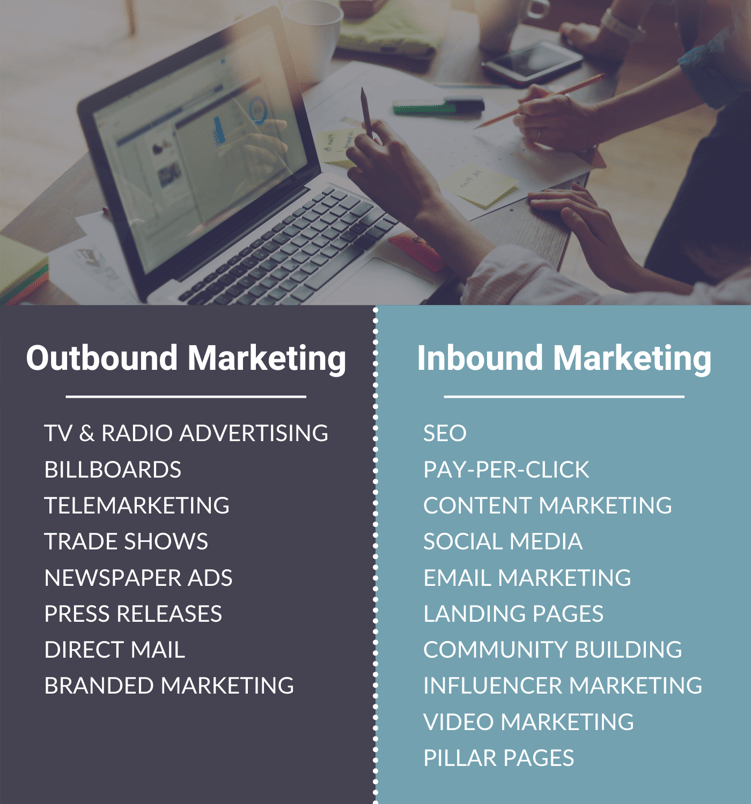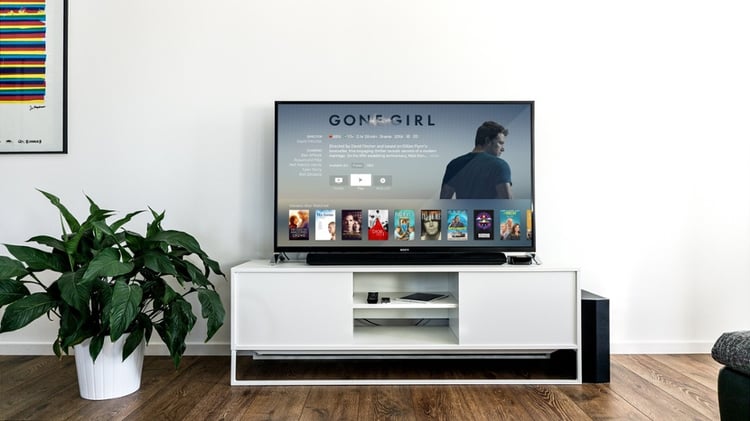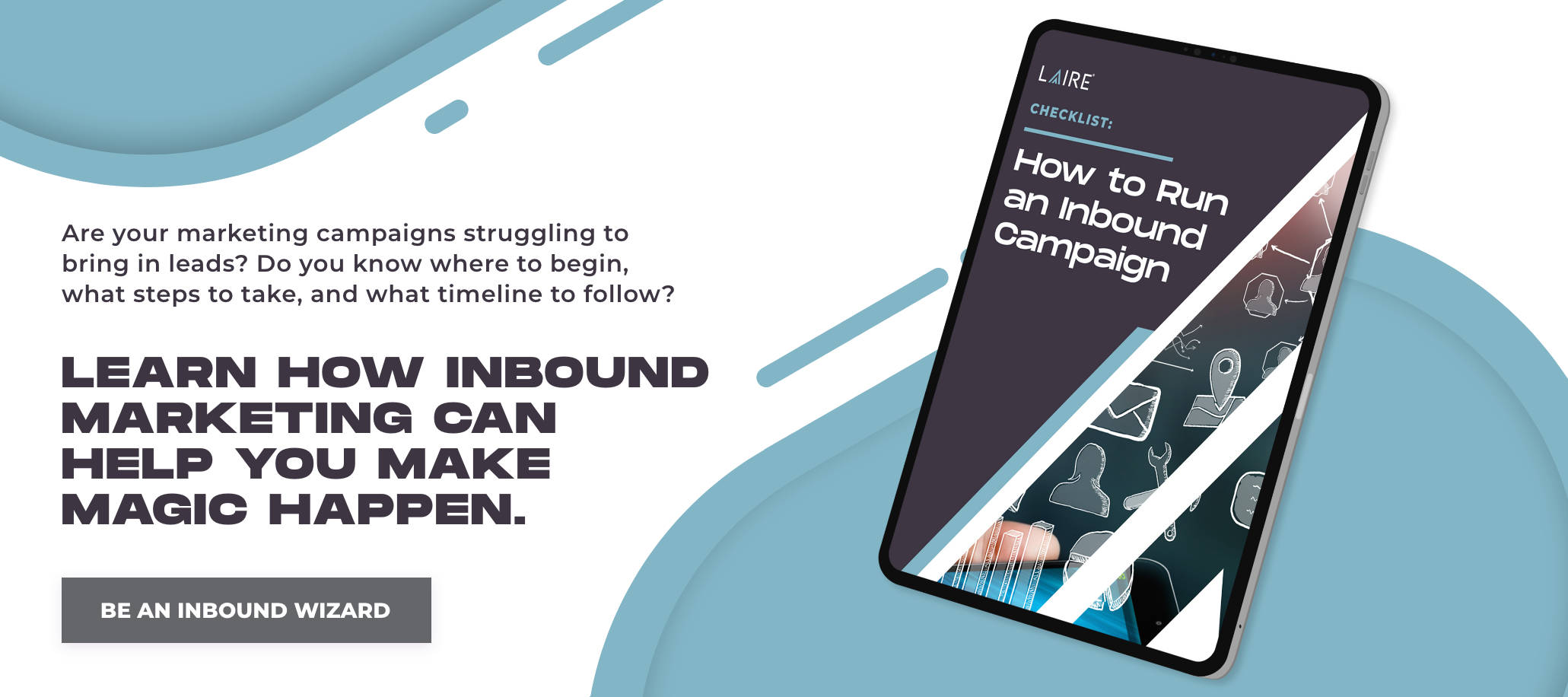Let's face it; developing a marketing plan can be frustrating. You spend hours crafting what you think is an awesome strategy for your business; incorporating all of the marketing best practices you've learned from podcasts, peers and industry articles. Then, you implement your plan, and halfway through the year, you're not seeing results. It's super deflating, and leaves you wondering, which marketing tactics will actually get results?
It's a great question for a business owner or a marketer to consider. But, to best answer that question, let's first identify the differences between the two overarching categories of marketing - outbound and inbound marketing.
Outbound vs. Inbound Marketing: The Difference
The difference between outbound marketing and inbound marketing boils down to the practices that are typically executed under each umbrella. Outbound marketing involves the more traditional methods of marketing, while inbound marketing is a more modern methodology that revolves around content.
In case you're more of a visual person, the chart below gives you a high-level overview of the difference between outbound and inbound marketing.

Now, let's further define both outbound marketing and inbound marketing to paint a clearer picture.
What is Outbound Marketing?
Like we said above, outbound marketing encompasses the traditional forms of marketing where companies use mass media to push their advertising message out to the public. Some examples of outbound marketing tactics include:
- TV and radio ads
- Billboard ads
- Telemarketing and cold calls
- Trade shows
- Newspaper ads
- Press releases
- Direct mail
- Branded marketing (or promotional swag)
Some of these marketing tactics may seem like a blast from the past, but they are, in fact, still in use. Here's the thing - some outbound marketing tactics are more successful than others. Some also require big bucks. So, out of the tactics we've listed, where will you see a return on your investment, and what will only hurt your company's bank account? To answer that question, let's take a closer look at four of them, including TV and radio ads, billboard ads, trade shows, and direct mail.
TV and Radio Ads

TV and radio advertising is an outbound marketing practice that is still widely used. Think about a recent TV commercial you've seen or a radio ad you've heard on the way to work. It was most likely a B2C (business to consumer) brand, right? Although many B2B (business to business) brands embraced TV and radio advertising in the past, they have since recognized that it isn't as effective for their businesses today, and other inbound marketing tactics have taken their place.
Additionally, in TV and radio advertising, it has become more and more difficult to make an impact. With cable and satellite TV customers and AM/FM radio listeners switching to streaming services to watch their favorite TV shows and listen to music commercial-free, the ROI has definitely suffered.
TV ads specifically are also extremely expensive to produce, and costly for a prime time spot. In fact, according to Legal Zoom, "a sharp, catchy TV spot can easily cost anywhere from $100,000 or more to produce", and prime advertising spots on a major network "may cost $2,000 to $3,000 per spot". So, let's say you spend $100,000 to produce an amazing TV commercial and select a $2000 spot to play 10 times. That's a total cost of $120,000. To break even, that's a lot of new or repeat business, right?
Billboard Ads
Billboard advertising is another form of outbound marketing but is much less expensive than TV ads. In fact, FitsSmallBusiness.com states the average cost of a billboard in more rural areas is roughly $250 per month. But, in highly-populated urban areas, the monthly cost can start at $14,000.
The effectiveness of billboard advertising is questionable. It's a challenging way to get your message across and drive effective calls-to-action. After all, a billboard is typically placed on a highway where people are commuting to and from work, taking kids to school, etc. They're driving at least 55 MPH, and only have time to catch a glimpse of a billboard (if they notice it at all).
However, billboard advertising can be effective if executed correctly. The key is to have an interesting visual, concise messaging with a call-to-action, and clear branding.
Chick-fil-A is a true champion of billboard advertising. With their iconic 3D cows painting a fun, yet short message on their billboard (like "Eat Mor Chikin" and "Don't Have a Cow"), this popular fast-food brand effectively gets their message across and makes passing drivers get a serious craving for some chicken nuggets.
Trade Shows

Industry trade shows are super popular in the B2B world. It seems like there's a trade show for practically everything. There's the NAMA Show for the vending industry, the WWETT Show for the wastewater industry, and the Car Wash Show. That one is pretty self-explanatory.
All of the trade shows we mentioned above are targeted towards industries that are completely different, but one consistent thing is the cost. It's more costly than you would think. Companies typically spend around $30,000 for a spot at a two-day show.
The big challenge to see a decent ROI from a trade show is the fast-paced atmosphere. Thousands of show attendees will walk by your booth, so there is a ton of opportunity to speak with potential leads. However, if your booth is visually lackluster or you don't have enough staff on-hand to actually talk to people, you will miss out on that opportunity.
There is, however, a way to get a solid ROI from trade shows by creating a strategy that includes the following steps:
- Identify your audience to determine the best focus for your booth.
- Plan and execute a pre-show communication plan to drive attendees to your booth.
- Schedule enough staff to manage the booth during show days.
- Talk to as many people as you can, and scan their attendee badge when they seem interested.
- Plan and execute a post-show communication plan to send follow-up emails to new leads.
At trade shows, many companies think it's all about the promotional swag or branded marketing, like pens, t-shirts and mint canisters. However, the true star has to be your booth and the solution you're offering for attendees. Otherwise, your ROI will fall flat.
Direct Mail

For many companies, direct mail is an outbound marketing tactic that has somewhat fallen off the annual marketing plan. Although effective for some industries, like dental practices, retail stores, restaurants, and auto repair shops, a lot of times, success requires a freebie or a coupon. Otherwise, your recipient will most likely immediately throw your piece of direct mail into the garbage can.
So, not only does direct mail marketing incur the cost of printing and postage, but when you include a free item or offer a discount, the immediate value of those potential leads is compromised. Also, the big question is always - "will they come back without a discount?". That can make the ROI of direct mail marketing pretty questionable.
What is Inbound Marketing?
Inbound marketing is a methodology which revolves around content marketing. It is designed to help you reach your ideal clients, take them through the three stages of the buyer's journey (including awareness, consideration, and decision) by providing valuable content, and convert them into customers. Some common inbound marketing tactics include:
- Search engine optimization (SEO)
- Pay-per-click advertising
- Blogging and content offers
- Social media marketing
- Landing & pillar pages
- Opt-in email marketing
- Community building
- Influencer marketing
- Video marketing
What's great about inbound marketing is the cost to implement is much more flexible than many outbound marketing tactics and can be customized to your monthly budget. If you have a low marketing budget, organic inbound marketing best practices can be the main focus, such as search engine optimization, opt-in email marketing, social media marketing, and content marketing.
If you have a bigger monthly budget, your inbound marketing plan can be much more robust, and the potential for results skyrockets. Tactics such as paid social ads, boosted social media posts, and pay-per-click advertising can then be incorporated.
To calculate the ROI of your inbound marketing strategy, it's important to set clear goals from the start. Are you looking to increase website visitors by 200 per month? Is the goal to boost revenue from online conversions by 10%? By having these clear goals in mind, you can better gauge your success; and if you're a marketer, clearly explain the ROI to your boss and other leaders in the company.
Jason James Deldovici from When I Work gave a great quote about content marketing ROI. He said, "The best way to measure the success of a content marketing strategy is to apply a dollar value to a specific conversion goal, then measure that against dollars spent (budget)." We couldn't agree more, Jason!
For example, let's look at blogging. As an average, according to an article by Neil Patel, B2B companies generate 88% more leads and B2C companies generate 67% more leads. By applying a dollar value to those leads, as Jason said, you can better understand the ROI of your efforts.
Now that we've covered how to identify ROI with inbound marketing, let's review some of the common inbound tactics, including SEO, pay-per-click advertising, blogging and social media marketing.
Search Engine Optimization (SEO)
The goal of search engine optimization (SEO) is to rank organically in search results by utilizing keywords in the content on your website. It all starts with conducting keyword research on the search terms your ideal clients are using to find your business. After you've compiled a solid list of keywords, you can then work on incorporating those into your website pages, blogs, and other content.
The most expensive piece of search engine optimization is the time it takes to do the research. Remember - results won't happen immediately, so the ROI is sometimes questioned. The fact of the matter is there's a lot that goes into ranking on Google and other search engines, so don't get discouraged if you don't immediately rank for the keywords on your list. A single blog using a keyword may not result in your site ranking on page one of Google, but having multiple related blogs, as well as a website page optimized with those same key phrases you can give your brand a stronger domain authority on the topic and improve your rankings. And this will bring in more and more visitors to your site, proving your time researching, blogging and updating website content was time well-spent.
Pay-Per-Click (PPC) Advertising

Pay-per-click (PPC) advertising (or paid search), is the marketing tactic of paying for your site to rank in search results on search engines, including Google and Bing, in the form of an ad. It is an extremely common practice for businesses in all types of industries from construction and finance to retail and healthcare, and in many cases, is the only chance to rank on page one for some of the keywords you've identified for your business.
The great thing about pay-per-click advertising is the options to customize your targeted audience by geography, interests, and language. That way, you have a better chance of bringing higher quality leads to your site. For example, if you own a local home renovation company that services the Charlotte area, you don't want leads in California, right? That's why customization is key.
There can be a relatively high cost in pay-per-click advertising depending on how competitive your selected keywords are, and that can make the ROI of PPC ads suffer. In fact, some super competitive keywords can be as expensive as $50 or more per click. If you don't have a big budget, that's probably a keyword to avoid in your paid search strategy.
To get the highest ROI from your PPC efforts, try to focus on relevant keywords with a lower difficulty and a more affordable average cost per click.
Blogging
The blog on your website is the key to unlocking SEO success, boosting website visitors, and building a toolkit of helpful resources for your target audience. However, despite its proven importance, business owners and marketers alike are sometimes resistant to blogging for a number of reasons, including:
- Not being a professional writer
- Not knowing what to write about
- Limited time to write
- Not enough staff to manage the process
Don't let this keep you from blogging though. Just because you aren't a professional writer, doesn't mean you shouldn't try. A written piece of content that incorporates SEO best practices and addresses your ideal clients' pain points is better than no pieces of content on your website at all. After all, how can you rank on Google for let's say "inbound marketing" if you have no blogs or website pages about it on your site?
Secondly, if time is the factor holding you back, we get it. Writing a long-form blog that's anywhere from 1500 to 2000 words or more takes a lot of time; typically five to eight hours or longer depending on how much research is required. If you simply have too much on your plate and not enough staff on-hand to help with blogging, consider working with a freelance copywriter or an online writing service, like WriterAccess.com.
Another option is hiring an in-house copywriter to join your team. This definitely comes with a bigger price tag though. According to PayScale.com, the average salary for a copywriter in the U.S. is just under $50,000 per year. That's over $4100 per month. Although an in-house copywriter is a great asset to have, if you don't have enough writing needs to constitute a salaried employee, that's when freelancers and online writing services are fabulous resources.
Social Media Marketing

Social media marketing is an affordable and effective way to market your business and drive traffic to your website, as long as you do it correctly and well. For starters, make sure you're on the right social media platforms.
If you have a B2B financial company, LinkedIn is probably a great place to be, while TikTok may be a platform to avoid. It's all about understanding where your ideal clients are and where they are more likely to interact with your brand. Otherwise, you could be wasting precious time and not seeing a good ROI.
To be successful in social media, it's also important to build a strong community of followers. Without that community, your chances of showing up organically in social feeds are slim to none. This can be a point when companies turn to paid social ads, which are highly effective if executed properly with targeting and engaging content.
The amount of ad spend required to see results really depends on the platform and your industry. For instance, as an average on Facebook specifically, the typical cost per click for ads hovers around $1.86. On LinkedIn, the average cost per click is higher at around $2 and run up to $4 or $5 per click.
After running an ad campaign, if you don't see results, try shifting your formula. Is the ad copy lackluster? Is the featured image or video interesting? Play around with it until you find the right combination.
Outbound Marketing or Inbound Marketing: What Actually Gets Results?
We've now defined both outbound marketing and inbound marketing, the tactics that fall under each category, and touched on the average ROI of those tactics. So, which one gets the best results? It really boils down to your ideal audience.
For instance, let's say you own a B2B financial lending company. Most likely, billboards, radio ads, and direct mail won't give you great results because your customer isn't looking for your services through those mediums. But, there is a ton of potential with inbound marketing. Your ideal customer is probably searching online to get a loan for their business. By having relevant content that is optimized for SEO, you can rank in their Google search results.
On the other hand, if you work for a local construction company, outbound marketing tactics, specifically direct mailers with a coupon or a "free estimate" message, could entice homeowners to call or at least visit your website. Inbound marketing will also play a big part in your marketing success. Blogging and content offers (like a Home Renovation Budgeting eBook or Kitchen Remodel Checklist) are a huge opportunity to provide value to website visitors, help you rank organically on Google, and increase lead conversions.
As you can see, in some industries, you may see a higher ROI through inbound marketing tactics alone, while in others, it takes a combination of both inbound and outbound marketing. Again, the important thing is to thoroughly understand your ideal client to see the most success out of your marketing efforts.
On top of having an effective marketing plan, a great website, and a knowledgeable team to implement your marketing tactics, having a step-by-step process laid out is another key part of driving traffic, converting leads, and increasing revenue.


